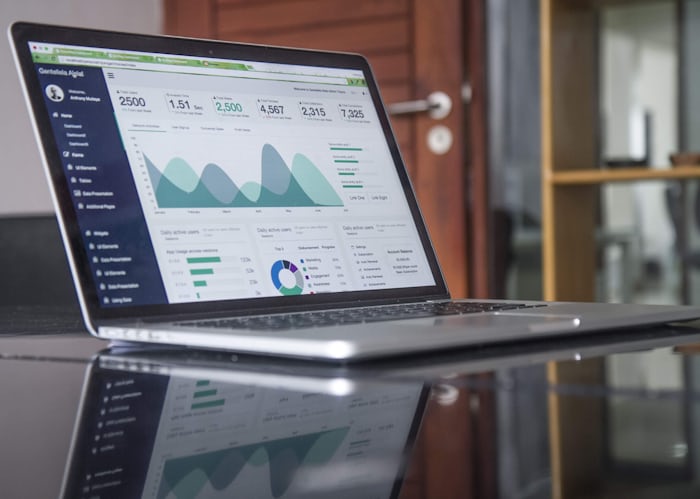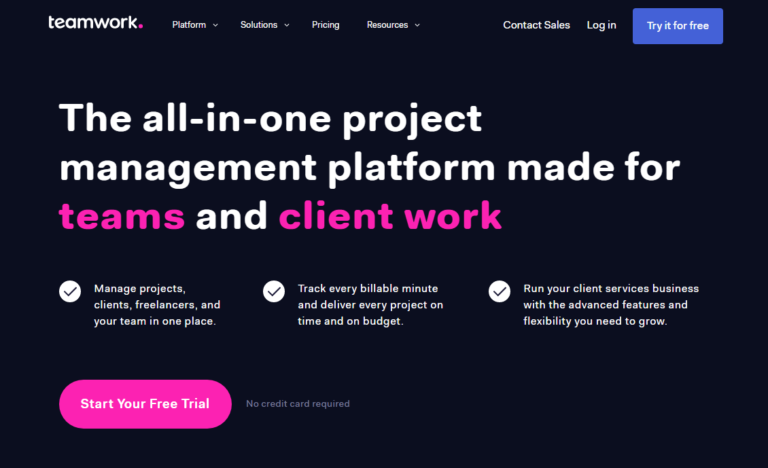Last updated Feb. 29, 2024 by Jessica Green
If you’re pushing out great content on your blog without seeing expected results, it’s high time you focus on ways to grow your blog traffic.
Blogging does not only involve creating and publishing articles. You need to rank high on search engines, drive traffic, and convert the traffic into leads. If you don’t know how to do that, read on to discover twenty six legit ways to grow your blog traffic.
26 Legit Ways To Grow Your Blog Traffic

1. Learn to Write Great Headlines
Your headline is the first thing a user will see in a search result. And if you miss the opportunity to captivate and intrigue them at that moment, they’ll scroll past your post to another.
Thus, one of the ways to drive traffic to your blog is by making catchy headlines that convince a user to click on your blog.
Learning how to write great headlines or titles is important. Here are tips that can help you:
- A good headline should have 5 to ten words at most. The choice of words should also evoke an emotional response in users.
- Should spark curiosity
- A good headline must describe what the article is about
- Use numbers
- It should contain SEO keywords to push up in search results
There are also tools that help you create engaging headlines, they include HubSpot, EMV Headline Analyzer, OptinMonster Headline Analyzer, CoSchedule Headline Analyzer, and WPBeginner Headline Analyzer.
2. Conduct Keyword Research To Build Your Ranking
Keyword research is the act of finding and analyzing the exact words or phrases that people enter into search engines. Doing this helps you to create effective content or articles that meet your audience’s demands.
Most bloggers write content based on guesswork or intuition. This means their content does not capture the search intent of users. So there’s a high chance they’ll rank low in search engines. And ranking low equals low traffic and clicks.
There are tons of benefits that come with conducting proper keyword research, they include:
- Keyword research helps you meet your targeted audience
- Once you discover the actual terms people are searching for, you can make articles based on them, thereby beating your competitors in search engine ranking.
- Keyword research also helps you to point out low competitive content opportunities.
How do you conduct keyword research? With the use of free and paid keyword research tools. Some of these tools include Semrush, Ahrefs, Serpstat, WPBeginner’s Keyword Generator, Moz Keyword Explorer, and AnswerThePublic.
Another Interesting Article: 17 Best Keyword Rank Tracking Software (Reviewed)
3. Work On Your Internal Linking
Internal linking on your articles is important if you want to drive traffic to your blog. It helps Google and other search engines to understand the pages on your blog and rank them higher.
What is Internal Linking? Internal Linking happens when you link a page on your article to a different page on your blog.
Once you create content that links to other pages on your blog, it could increase the clicks of the pages linked. It also points Google and other search engines to important pages on your blog, thereby helping the pages to rank higher.
4. Invest In Your Website Design
A bad web design can ruin all the effort you put into driving traffic to your site. If your site ranks high on search engines, and a user clicks on it due to the catchy headline, your blog design has the power to chase them away from your site.
A good web design, on the other hand, encourages users to spend more time on your page. Once Google notices this, it will consider your blog as helpful and will tend to push it higher on search engines.
Here are some common web design mistakes most bloggers make:
- Unresponsive designs
- Excessive pop-ups and ads
- Broken links and 404 errors
- Bad and inconsistent fonts
- Blurry images
- Clustered page layout and theme
- Poor navigation
- Weak call-to-actions
- Slow site loading time
- Absence of search functionality
If you’re designing your website, seek professional help. However, if you want to do it yourself, strive for simplicity.
5. Learn About Search Engine Optimization (SEO)
Once you understand SEO and apply it to your website, you’ll gain all the traffic you need.
Search engine optimization is a set of practices that increases the visibility of your website on search engines. If your website is visible on Google and other search engines, you’ll naturally gain traffic.
Learning SEO is not as difficult as it seems. Once you know the basis, all you need is to employ the right SEO tools and plugins.
Here are some of the best SEO tools and plugins to use:
- MonsterInsights
- Toast SEO
- Rank Math
- Semrush
- Ahrefs
- SEOquake
- Broken link searcher
- WP Rocket
Another Interesting Article: 25 Best SEO Tools (Honest Reviews and Free Options)
6. Generate More Backlinks
What is a Backlink?
A Backlinks, also known as an incoming link or inbound link is when a website makes an anchor text that links to another website. In other words, a backlink is when a website publishes an article that includes links to your website.
Why Is It Important?
When a reputable website inserts links to your site, it acts as a vote of confidence and increases your credibility. It also signals Google and other search engines to increase your visibility ranking.
Getting Backlinks from credible websites is difficult. However, here are tips to help you:
- Reach out to blog owners, journalists, and influencers.
- Offer to write guestpost on other websites. When doing this, provide links to your site.
- Create content that acts as a source for reporters and bloggers
- Publish skyscraper content
7. Create and Publish Readable Content

The articles on your blog should be easy to read. Google and other search engines prioritize sites with comprehensive and easy-to-understand content.
The articles on your website should be specific and straight to the point. When users click on your website, they expect to get direct answers to their questions. If your article keeps beating around the bush before providing answers, the user will leave your site. And if a user does not spend much time on your page, Google will deem your site as unhelpful.
To prevent users from leaving your site, create easy-to-read content, and make your site easy to navigate. Other helpful tips include:
- Use short paragraphs, line spacing, and make your words concise
- Check your plagiarism and readability score
- Improve your typography
- Use bold and appropriate fonts
- Employ the use of clear images, infographics, and videos.
8. Insert Call To Action On Your Site
The truth is, once a user gets the information they need from your site, the chances of coming back to your site is low. Hence, it is important to insert a call-to-action (CTA) on your site – CTA is a word or phrase that convinces visitors on your page to subscribe to your newsletter.
To gain traffic on your site, you need both new and existing users. One of the ways to retain existing users is through email listing.
Email listing is an email marketing strategy that involves collecting the email addresses of users who visit your site. Doing this enables you to send targeted emails and newsletters that help you retain existing users.
9. Employ The Use Of Images, Charts, and Infographics
Adding related images, charts, and infographics to your article makes them more appealing and easy to read. And when a user finds your article appealing, they’ll tend to spend more time exploring your site – this implies to Google that your site is helpful, thus its ranking will increase on search engines.
The human attention span is short, so you need to rely on images and infographics to gain a user’s attention and engagement.
Be careful with the images you use on your website. Most images are protected by copyright and using them without permission can damage your site’s reputation.
You can create your own images and infographics. Or use free images available on the internet.
10. Pay Influencers
Another legit way to drive traffic to your blog is by paying influencers to market and advertise your blog.
According to research on Influencer marketing conducted by HypeAuditors, you’ll gain $4.21 for every $1 you spend on an influencer. Another study by The Influencer Report reveals that 50% of millennials will trust the recommendations of an influencer.
All these studies prove that paying influencers to advertise your blog can boost its traffic.
If you decide to take this route, find influencers that relate to your niche. If you’re into food blogging, reach out to food influencers. Similarly, if you’re into fashion and lifestyle, reach out to influencers in the niche.
11. Insert Short Videos In Your Articles
Most people prefer short videos that contain answers to their questions. So if you want to increase your page’s average visit duration, insert short engaging videos in between your write-ups.
Do not directly upload videos to your website. It can ruin your site’s performance and a user’s experience.
To insert videos on your website, upload the video to your YouTube channel, and embed the video to your website.
12. Optimize Web Speed
If a user sees your blog and clicks on it, they can immediately lose interest if your blog takes time to load. And once they log out of your page, Google will notice the short visit duration and will flag your blog as unhelpful. This will decrease your SEO ranking and traffic.
On the other hand, if your blog loads faster, it enhances user experience and impacts your ranking positively, which in turn will grow your blog’s traffic.
To increase your site’s load time, optimize your images, use browser HTTP caching, limit redirect usage, fix 404 errors, optimize your website for mobile devices, reduce third-party scripts, use CDN, and evaluate your hosting provider.
13. Monitor and Track Your Site’s Keyword Ranking
Tracking the performance of your site’s keyword ranking is another way to grow its traffic. This process involves monitoring and analyzing the performance of each content you publish.
You need to be able to point out why your article is ranking high, and what keyword is responsible for it. The Google Search Console is a free tool that can help you do this.
In addition, you need to monitor your competitor’s rank on search engines and the keywords they use. Tools like Semrush can help you point out why your competitor ranks higher than you, and the changes you should make to your posts.
Another Interesting Article: 31 Best Website Traffic Trackers of 2023 (Check Other Website Traffic)

As a blogger, you need to build a strong online presence on social media platforms like Facebook, LinkedIn, Instagram, Medium, Twitter, and Reddit. Once you gain a good number of followers on these platforms, you can direct them to check out your blog posts in order to grow your traffic.
To avoid sharing your posts manually on social media platforms, use tools like Jetpack, Buffer, and MeetEdgar to help you share posts automatically.
15. Join Online Communities
Interacting with bloggers and users in online communities can bring some engagement to your blog.
Most online communities have hundreds and thousands of interactive users. Being active in this kind of environment can boost your visibility.
You can find online communities on Facebook, Twitter, LinkedIn, and other social media platforms.
Once you join an online community, do not start by posting links to your blog. First, introduce yourself and interact normally with people. Comment on other’s posts, leave a like, join discussions, and answer questions. Then proceed to introduce your blog naturally.
16. Monitor Social Media
If you want to grow your blog’s traffic, you need to be able to immediately capture the demands and questions of internet users. Once you know what they’re curious about, you can write content on it.
To know what people are curious about, visit social media sites like Twitter and Facebook. Monitor keyword rank in these sites and offer answers to people’s questions by providing a link to your site.
You can also set up alerts for keywords relating to your niche on social media. Applications and tools like SE Ranking, Rank Tracker, and SEO help to monitor keyword rankings on social media.
17. Encourage User-Generated Content
User-generated content is any form of content created by people who visit your site. This content could be social media reviews, videos, posts, and images.
If you want to boost engagement on your blog, encourage users to share their opinions or comment on a topic you write about – this helps you retain existing users.
Additionally, if you structure your blog around user-generated content, you’re more likely to rank high on search engines.
18. Monitor Your Website Traffic and User Engagement
It is important to keep updates on your site’s rank on search engines, reasons for its rank position, and keywords that impact its ranking. You also need to know why users click on your site, their page visit duration, and what they do on your site.
Keeping data on the above information enables you to make efficient strategies that can grow your traffic.
Google Analytics is a tool that helps you collect vital data about your blog. This tool tracks user activities and engagement.
If you want to know what users think of your site, plugins like UserFeedback help you ask questions directly.
From time to time, make changes to your old posts. Update the keywords used, add trendy images or videos, update information on the article, and incorporate new backlinks. Doing this enables you to regain your page authority and rank higher.
Note that Google displays the date of publication on each of your articles. If an article is a few months old, a user will see it as outdated information and may refuse to click on your site. Thus it is important to always republish and update old posts.
In addition, share your old posts on social media to gain new users. Tools like Buffer, Jetpack, and Revive Old Posts automatically share old blog posts.
20. Participate in Q&A Websites

Q&A websites are websites or online forums that allow people to ask questions on topics that bother them. It also allows people to share answers to questions and suggestions. Some Q&A websites include Quora, Reddit, Blurtit, and Stack Overflow.
Oftentimes, Q&A websites rank higher on search engines than established blogs. You can take advantage of this by joining discussions on the forum and providing answers to questions. You can also link a relevant page on your blog while answering their questions. People who click on the forum will naturally click on your page in search of more answers, thus growing your traffic.
21. Explore Other Social Networks
Besides Facebook and Twitter, there are tons of other social media platforms to promote your blog on.
If you make video content and post them on TikTok, you can grow your follower base. These followers, with proper guidance, can turn into your loyal blog users.
Overall, it is important to expand your social media presence. If your blog deals with fashion and lifestyle, you’ll probably find more engaged users on Instagram and TikTok. If you’re into the finance niche, expanding your presence on LinkedIn will help you find your target audience.
22. Utilize Social Proof
Users are most likely to be loyal and recommend your blog if you show them some sort of proof – evidence that confirms the articles you put out.
If you own a “How To” blog, you can encourage your visitors or users to leave feedback after following your tutorial. Then, post about the user’s feedback on your social media page to attract new users.
23. Create Your Own Online Group
Another way to grow your blog’s traffic is by creating an interactive online group on any social media platform. If your target audience is mostly on Facebook, you can utilize the platform by creating fun groups and pages.
Grow the page by making funny posts that attract users. Once you grow a good follower base, make posts that relate to your blog and add links. Do this naturally to avoid putting off your followers.
24. Use A Premium Domain Name
A good majority of blogs that rank high on search engines make use of high-quality domain names – these domain names are short, concise, and easy to remember. They also use
How does a premium domain name boost your traffic? If you have invested in keyword research and SEO, having a domain name that corroborates with your niche can increase your visibility on search engines.
For example, You run a cooking blog with a domain name like “cookingclass.com”. If a user enters “cooking class” or “cooking tutorials” on any search engine, you’ll likely be in the top three results.
25. Make Your Blog Mobile Friendly
From a study conducted by Statista, it was revealed that over 50% of internet traffic comes from mobile users. In other words, you can boost your blog’s traffic rate by making it mobile-friendly.
A mobile-friendly blog is a blog that is easy to read and navigate when using a mobile device. If your blog isn’t optimized for mobile users, it can ruin a user’s experience.
26. Write Longer and Comprehensive Articles
When a user enters a question into a search engine, the search engine assumes that the user needs comprehensive information on that question. So, it recommends blogs with longer articles on the information needed.
The ideal blog post length is 1500 to 2500 words.
Final Thoughts
The process of growing the traffic on your blog won’t be easy. However, this article aims to make things easier for you. Simply follow the methods in order to experience good results.
Frequently Asked Questions On Blog Traffic
How Do I Get 1000 Blog Visitors A Day?
To get more than one thousand blog visitors in a day, write long search engine-optimized articles with targeted keywords. Insert quality links in the article and generate backlinks.
What Type Of Blog Gets Most Traffic?
Q&A websites, how-to blogs, what-is websites, and “who is” types of blogs are known to get the most traffic.
How Do You Check If A Website Has A Lot Of Traffic?
To check if a website has a lot of traffic, use apps and tools like Semrush, Google Analytics, Ahrefs, SimilarWeb, Serpstats, MozBar, and Sitechecker.








